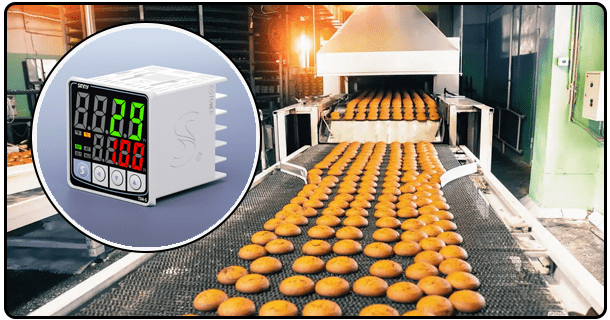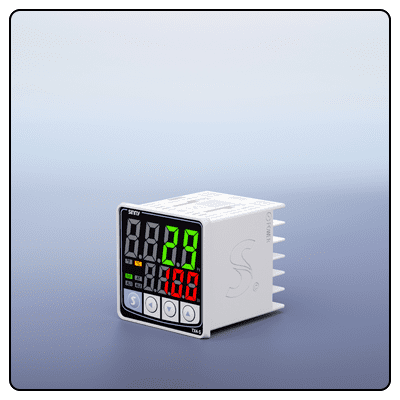Best Practices for Using PID Temperature Controllers in Chemical Processing
Discover our essential guide to PID temperature controllers used in chemical processing. Gain tips and techniques on selecting, installing and operating PID systems to achieve maximum efficiency, safety and product quality while uncovering industry insights, best practices and real world applications in our comprehensive article.
1. Introduction
For chemical processing to run efficiently and reliably, temperature regulation must remain precise. PID (Proportional-Integral-Derivative) temperature controllers play an essential role in accomplishing this feat - helping ensure process efficiency, safety and product quality are maintained throughout. In this article we outline best practices and industry recommendations regarding their usage within chemical production.
2. Understanding PID Temperature Controllers
Fundamentals of PID Control
PID control is an advanced technique combining Proportional, Integral and Derivative actions in order to maintain desired temperature settings. Each of its three components plays an essential part of this method - Proportional (or Proportional Integral Derivative control actions), Integral control actions (or Integral-derivative), and Derivative actions (or derivative action). Each part contributes its unique role: Proportional = Proportional input + Integral outputs = Derivative actions
3. Proportional Control adjusts output proportionally to errors
Integral Control incorporates errors over time into output adjustments for long-term correction; Derivative Control predicts future errors based on their rate of change.
PID controllers have proven extremely beneficial in environments involving chemical processing where temperature stability is vitally important.
Key Components
A PID temperature controller comprises several important parts. These components include:
Sensors: measure process temperatures.
Actuators:
use this information to adjust process control elements (heaters or coolers).
Control Algorithms: interpret sensor input to make adjustments necessary
User Interfaces: allow operators to set and monitor performance through user interfaces.
Selecting the Right PID Controller
Criteria for Selection
Selecting an effective PID controller involves taking into consideration several important aspects, including:
Compatibility with Chemical Processes: Make sure the controller can successfully operate within your specific chemical environment.
Temperature Range and Accuracy: Make sure the temperature range meets and maintains high accuracy with respect to process temperature requirements.
Response Time and Stability: Adapt quickly to temperature variations without overshooting them, whilst being user friendly.
Ease of Integration and Use: To be user-friendly and seamless integration.
Evaluating Manufacturer Specifications
When Evaluating PID Controllers, consider:
Reliability and Reputation of Manufacturer: When selecting products, always go with those from reliable manufacturers with proven reliability records.
Technical Support and Service Options: Ensure access to comprehensive support and service solutions.
Installation Best Practices
Proper Placement and Mounting.
Proper installation ensures optimal performance:
Environment Considerations: Proper environmental conditions including stable temperatures, low humidity levels and minimal vibration should be observed when placing controllers. Accessibility for Maintenance and Monitoring: Place them where they can easily be reached to perform regular checks or maintenance duties.
4. Wiring and Connections
Proper wiring is crucial:
Proper wiring connections is of utmost importance in making controllers functional effectively: it ensures their reliable use over the lifecycle of an application.
Secure and Correct Electrical Connections:
Ensure all connections are made securely and properly, using appropriate cables and connectors that meet electrical specifications. Initial Setup and Configuration : These initial steps are critical in providing accurate control
Calibration of Sensors:
Make sure all sensors are accurately calibrated. Setting Up Control Parameters and Safety Limits: Set your controller with appropriate parameters and safety limits. Implement Operational Best Practices Regular Monitoring and Adjustments Can Make All the Difference: Regular checks are key in keeping systems operating optimally:
Reducing Process Variable and Controller Performance Variations: Continue monitoring the system to ensure optimal performance. Making Necessary Adjustments to Control Parameters Based on
Performance Data:
Update control parameters as necessary based on performance analysis data. Data Logging and Analyses
Data logs are key in optimizing processes:
they record critical process variables that must be recorded so as to enable process improvements and optimization.
Importance of Recording Temperature Data:
Log temperature data to track performance over time.
Analyzing Data for Trends and Anomalies: Use this information to detect trends or anomalies within your data set.
Alarm and Safety Management
Proper alarm and safety management is of utmost importance:
Setting Alarms to Alert Operators of Deviations and Failings: Configure alarms that notify operators of deviations and potential failures, whilst Implementing Safety Interlocks and Shutdown Procedures ensure these are in place as well.
Finally, Maintenance Best Practices Regular Inspection and Cleaning may also need to take place regularly to maintain optimal efficiency of operations.
Regular maintenance increases longevity:
Regular Visual Inspections: Perform routine visual inspections to spot potential problems and clean sensors and components regularly to maintain accuracy. Cleanliness also enhances accuracy.
Scheduled Calibration is Essential
Importance of Periodic Calibration: Periodic calibration ensures accuracy
Calibration Procedures and Tools: Follow prescribed calibration processes using appropriate tools.
5. Firmware/Software Updates
Regular software and firmware updates will guarantee optimal performance:
Keep Your Firmware and Software Current:
Make regular firmware and software updates to take advantage of improvements, understand their benefits and implement them by following manufacturer protocols.
Troubleshoot Common Issues Recognizing Signs of Trouble
Recognizing symptoms early can help avoid larger issues:
Consistent Temperature Control: If your system's temperatures aren't staying within acceptable tolerance levels, this could indicate problems with either PID settings or sensor accuracy.
Sensor Faults:
Faulty sensors could lead to inaccurate readings for temperature measurement purposes and potentially misinforming management on what the true temperatures should be.
Communication Errors:
Any discrepancies between controller and other system components can create significant disruption of operation.
Systematic Troubleshooting Approach
A structured approach is key when troubleshooting.
Step-by-Step Guide to Diagnosing and Fixing Issues:
Take a systematic approach when diagnosing and fixing issues, employ diagnostic tools accurately pinpoint problems quickly, use these diagnostic tools as troubleshooting aids; they're important tools.
Keeping This in Mind for Troubleshooting Issues Using Diagnostic Tools
Employ diagnostic tools effectively when troubleshooting;
they will greatly facilitate troubleshooting as an aid:
Multimeters:
Essential tools for accurately gauging electrical parameters and Oscilloscopes for viewing signal waveforms.
Diagnostic Software:
Software tools can assist in diagnosing and solving issues; while Advanced Techniques & Innovations for Predictive Control are also valuable assets to have at hand.
Utilizing advanced control techniques can significantly boost performance:
Implement Adaptive Control Algorithms and Implement Predictive Maintenance Strategies: These approaches use adaptive algorithms to dynamically modify control parameters to achieve improved performance, while predictive maintenance uses data analysis techniques to predict failures before they happen, as well as integrate with Advanced Process Control Systems for added safety and reliability.
Integrating PID controllers into advanced systems provides significant advantages:
Benefits of Integrating DCS or SCADA Systems:
Integrating can enhance overall system efficiency and monitoring capabilities, with real world examples showcasing advantages and best practices such as those found within chemical reaction control applications (for instance). On these studies are given real life examples that showcase benefits as well as best practices
6. Example 1 Chemical Reaction Control
Temperature control in chemical reactions is essential to product quality:
Challenges and Solutions: Maintaining optimal reaction temperatures is challenging due to exothermic and endothermic reactions, with real world examples including case studies that showcase successful implementation.
Example 2: Distillation Process
PID controllers play an essential part in distillation processes: they help ensure efficient heating/cooling control during distillation operations.
Best Practices for Temperature Regulation in Distillation Columns: Precise temperature management is necessary for effective component separation. Case Studies illustrate optimal approaches and results; whilst concluding, here is a Summary of Best Practices
Effective implementation of PID temperature controllers in chemical processing generally entails:
Understanding the fundamentals and components of PID control.
Selecting an ideal controller based on process requirements. Following best practices for installation, operation, and maintenance. Leveraging advanced techniques while integrating them with advanced systems
- Explore the Importance of PID Temperature Control in Manufacturing
- Why Choose PID Temperature Controllers Over Traditional Ones























